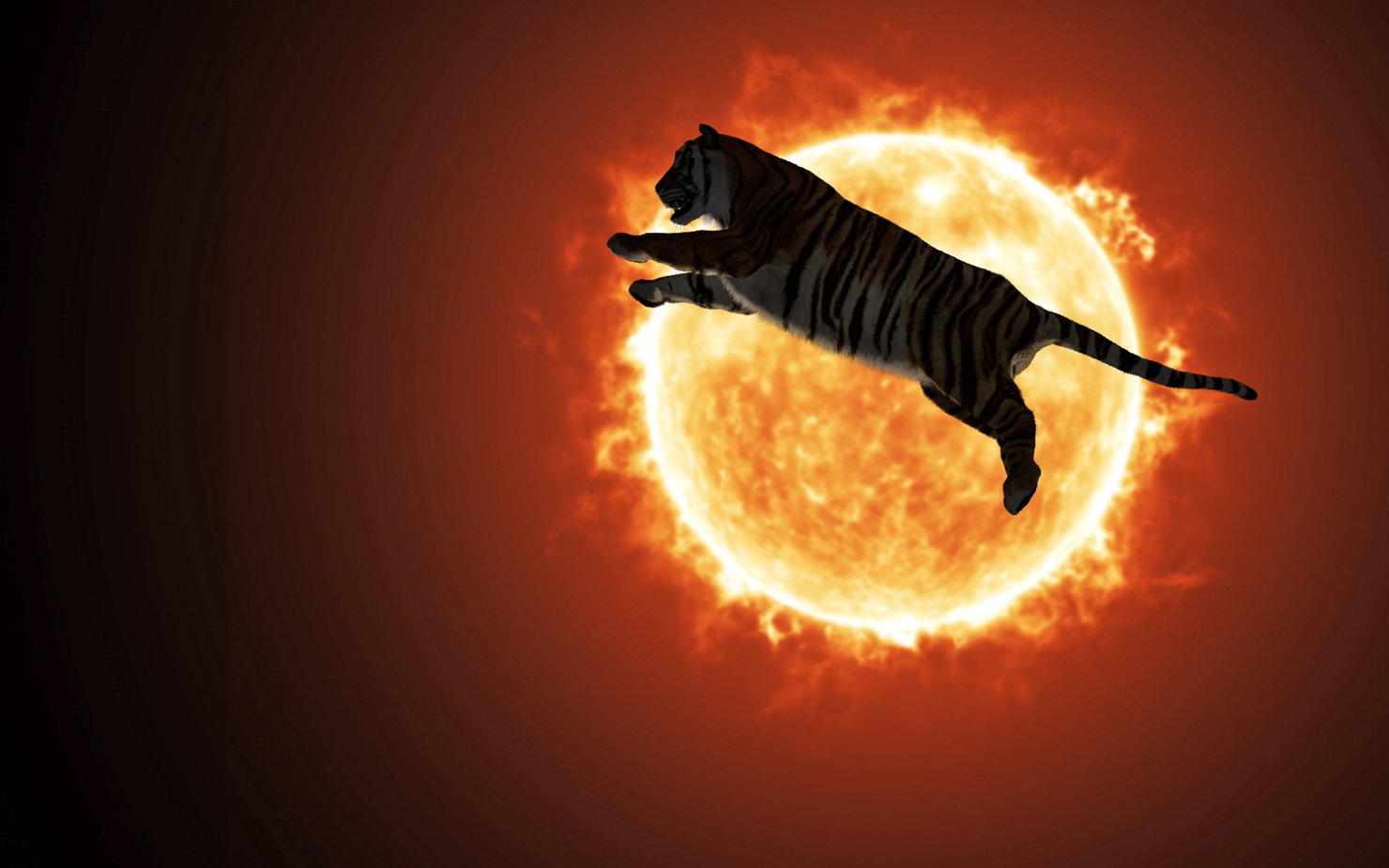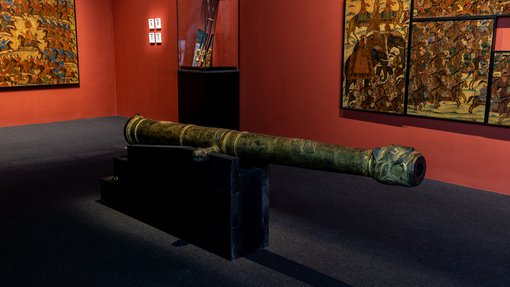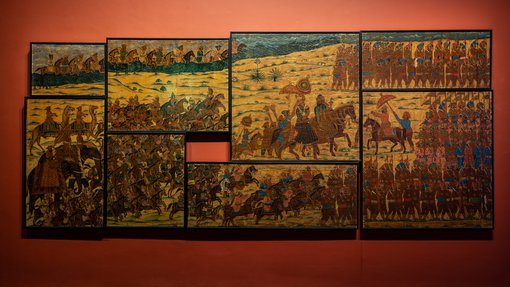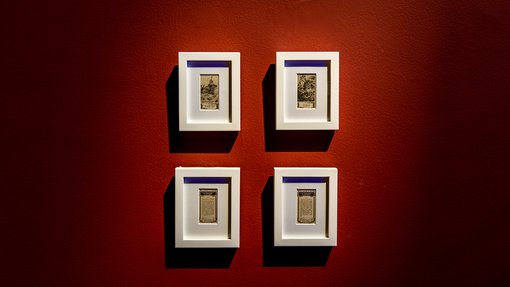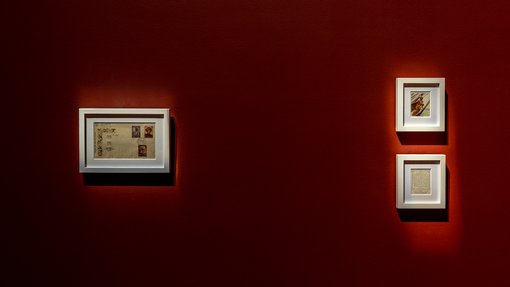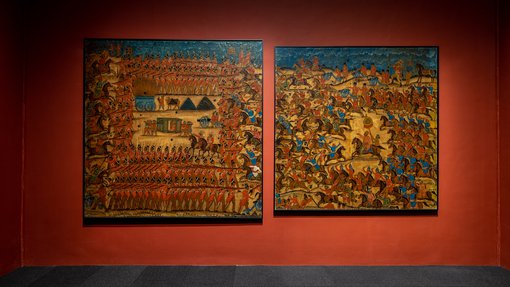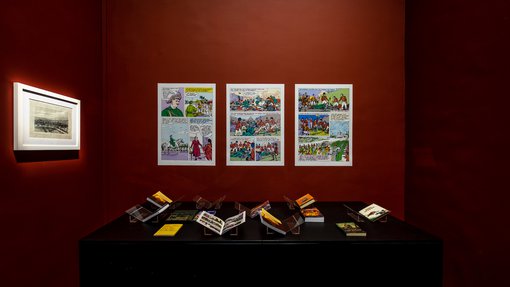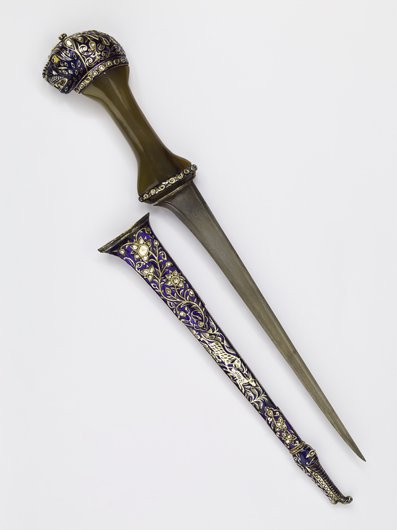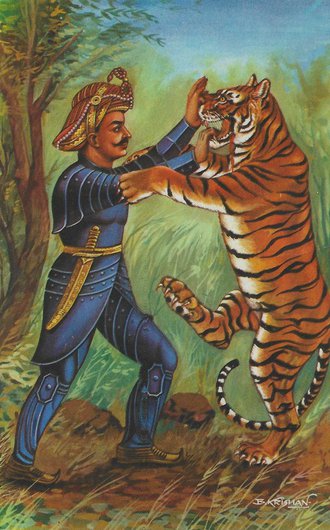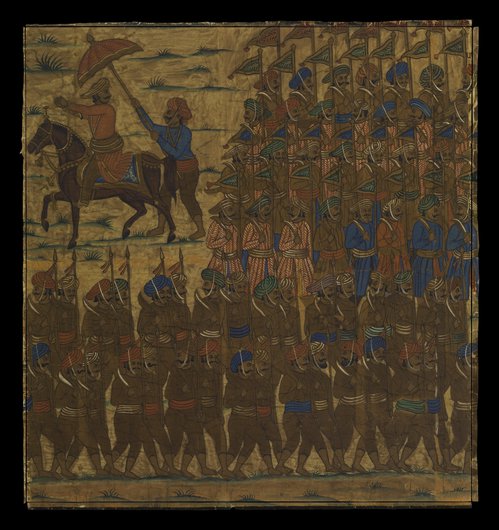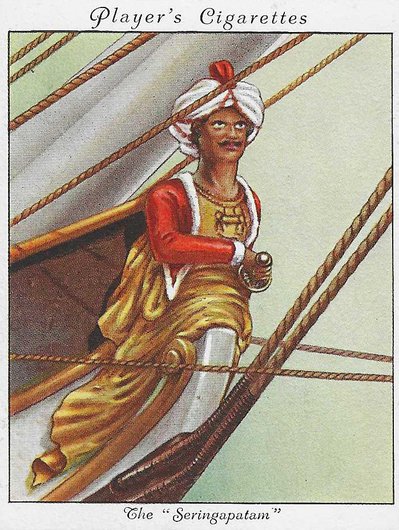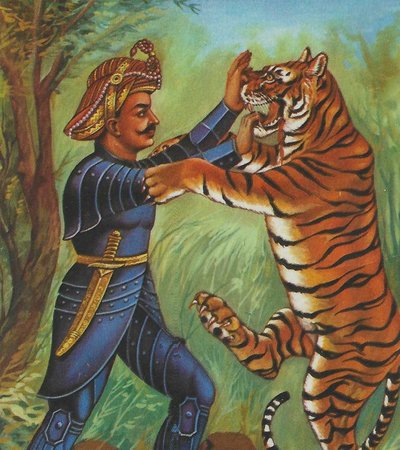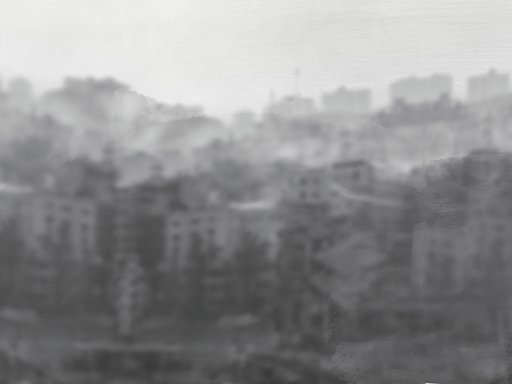Curated by Tom Eccles and Mark Rappolt, One Tiger or Another places a CGI animation by Singaporean artist Ho Tzu Nyen (b. 1976) alongside artefacts relating to the legend of Tipu Sultan, the eighteenth-century ruler also known as “the Tiger of Mysore,” one of the most famous and polarising figures in South Asian history.
Expanding on themes introduced by Ho’s two-channel video, One or Several Tigers, 2018, and anchored by the story of Tipu Sultan, the exhibition explores the creative potential of art and media as a means of storytelling and the shaping and reshaping of identity. It also questions the boundaries between fact and fiction and between coloniser and colonised, and it looks at how the same story can be told and retold. In doing so, it challenges the idea that both history and art are about fixed and stable perspectives and conventional notions of centres and peripheries of power.
